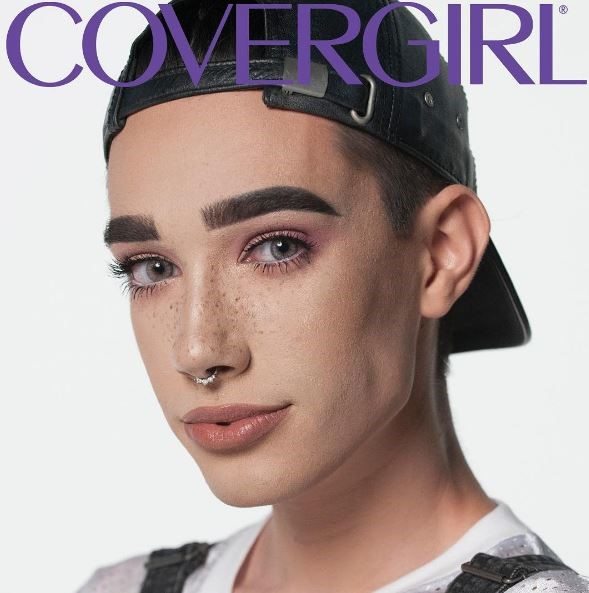The beauty industry is leading change with influencer marketing.
When CoverGirl announced on Instagram and Twitter earlier this month that James Charles, the 17-year-old beauty influencer was the brand’s latest spokesperson, social media exploded. There were accolades, haters, and lots of questions about the direction of marketing in the competitive beauty industry. In that instant, male beauty bloggers hope they moved from being a niche to a necessity.
A quiet shift in beauty started in 1994 when the term metrosexual was coined by Mark Simpson in GQ to define men who are meticulous about their appearance. These men fuel a segment of the overall beauty industry that is expected to grow from a $460 billion industry in 2014 to $675 billion in 2020, a 6.4% rate of growth, says Business Wire.
Today, there’s a makeup revolution and it is being led by gender-bending men with the skills of fine artists, an eye for color and five o’clock stubble. These digital natives are getting a lot of attention by making makeup gender neutral and broadcasting it on their social channels, mainly with tutorials on YouTube and photos on Instagram.
CoverGirl’s move was a clear play to capture relevance among Gen Z digital natives, as brands realize they can’t ignore social media fame. Gen Z, says Digiday, has the attention and marketing budgets of many beauty brands. More gender-fluid than their previous generation, 81% of Gen Z say gender doesn’t define a person like it used to, while 56% know someone who uses gender-neutral pronouns like “they.”
“Makeup is not just for gay men or drag. Straight men want to look better and use products to hide blemishes and imperfections. It’s not about going glam all day long,” said Peter Pratts, who only wears a full face for photo shoots and events.
Pratts is part of a small group of gender fluid men who are taking the beauty world by storm. Pratts grew up in Orlando with a mom who always wore red lipstick and eyeliner when other mothers went bare faced. Nicki Minaj piqued his interest in makeup and then beauty powerhouse, makeup artist ThymetheInfamous, solidified his love. Pratts works full-time as an influencer and gets assignments from major brands like MAC, Benefit, Tarte, Murad and more.
“While I am very fortunate, very few companies are using male beauty bloggers because they are concerned with how it will make them look. The big companies are still very cautious. You aren’t going to see a male beauty blogger featured in a major department store anytime soon. I think it will be five years before this feels mainstream,” said Pratts.
In the competitive beauty industry, finding the next big thing is critical to keeping an edge in the marketplace.
“It’s time brands get with the movement and realize makeup is not gender specific. It's for whoever wants to wear it,” said Tim Owens, an L.A. beauty blogger who goes by @Skelotim. Owens was recently featured in the New York Times for his makeup wizardry, he matches his makeup to his favorite snacks.
“In the makeup industry us boys are living in a woman's world, but each and every woman I have ever worked with or known in the beauty industry has been so accepting of men in makeup,” said Owens.
Influencers have already changed the industry and the way consumers shop. As long as content remains authentic, the expanded demographic male beauty bloggers bring will only increase reach and overall campaign impact.
Peter Pratts can be found @peterpratts on Instagram and Peter Pratts on YouTube
Tim Owens can be found on Instagram at @skelotim and Skelotim on YouTube
.png?width=504&height=360&name=Carusele%20logo%20%C2%AE%20logo%20Color%20(2).png)


